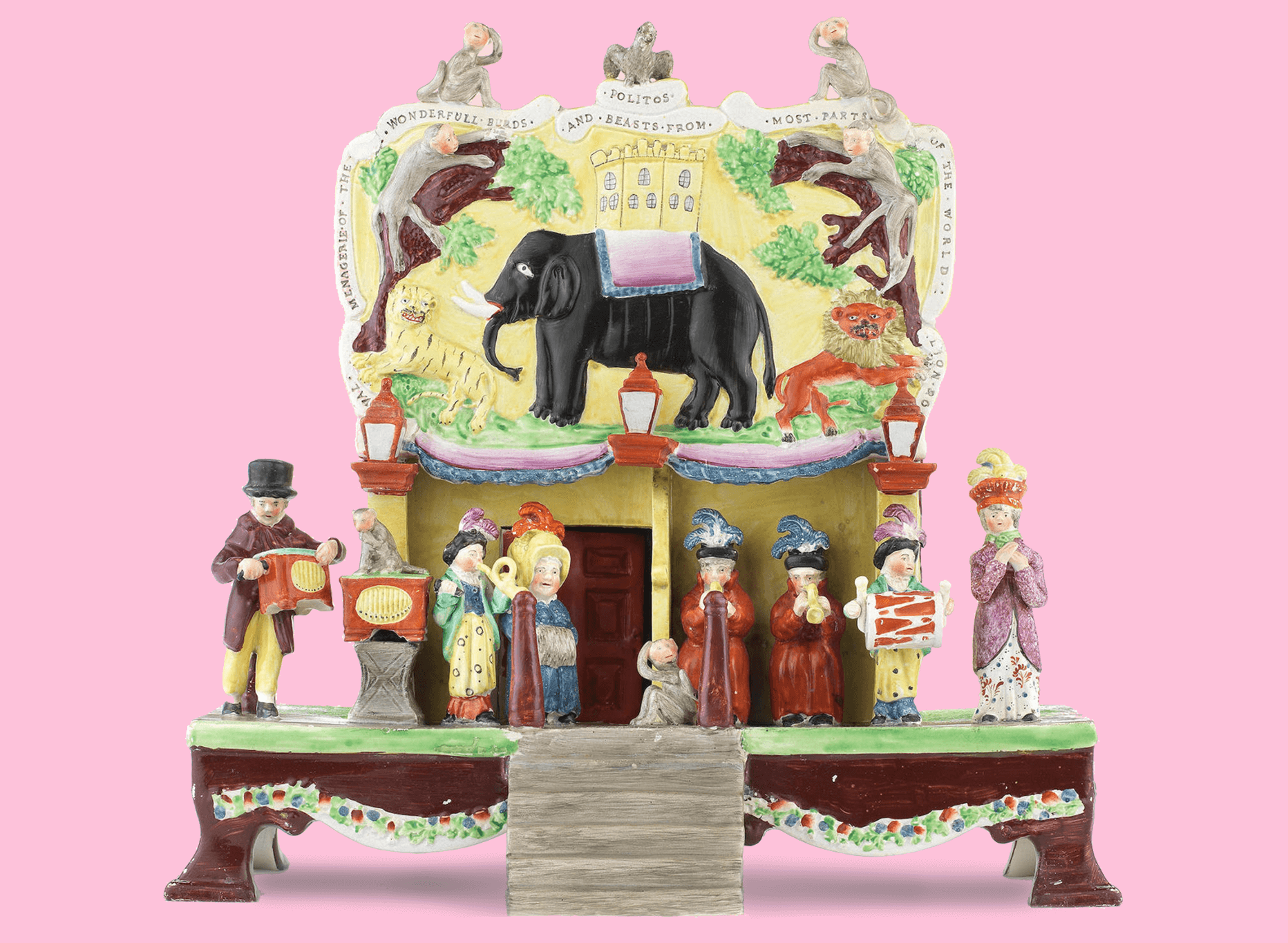Garibaldi
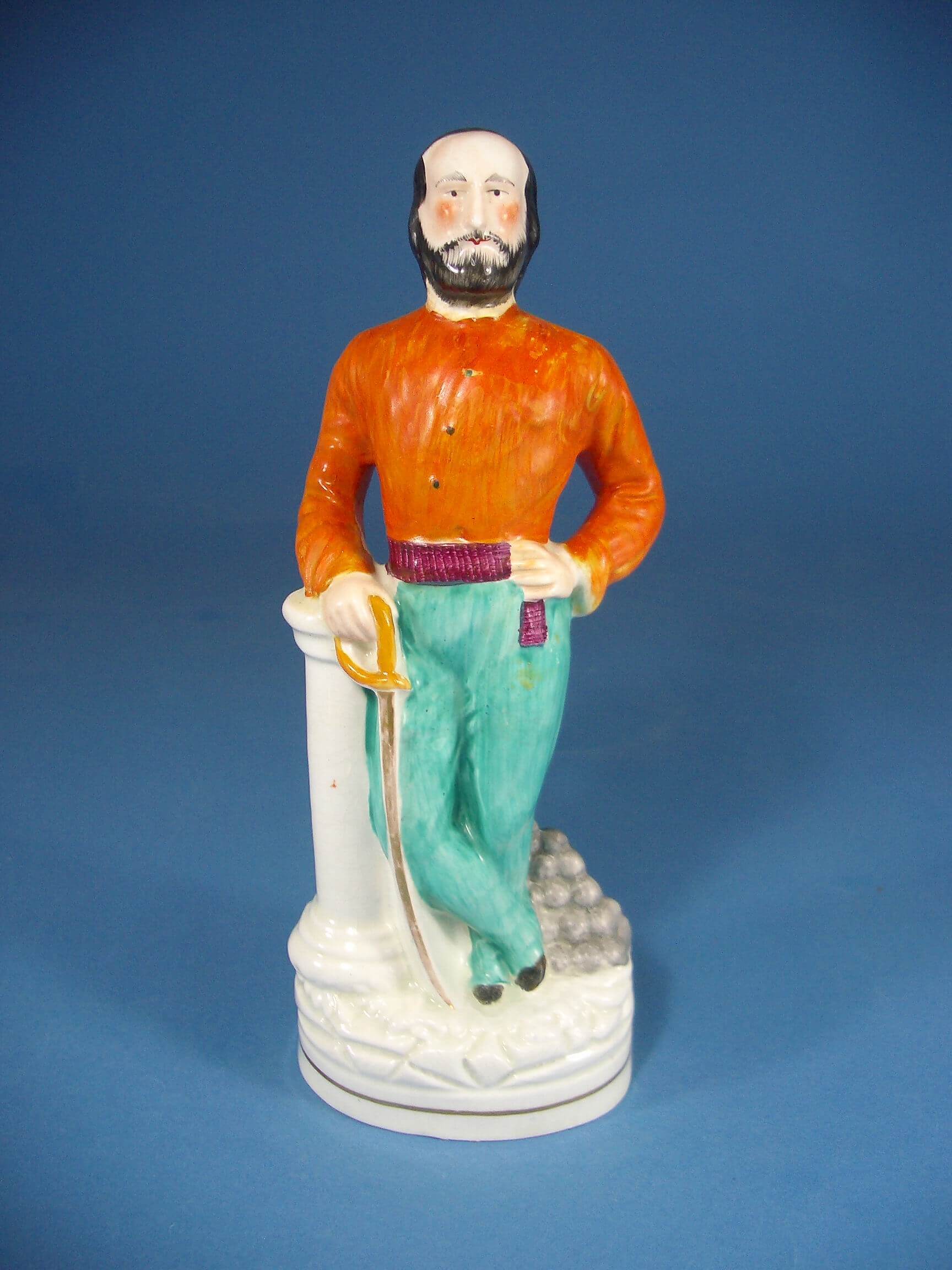
Giuseppe Garibaldi was an Italian soldier and patriot who helped unify Italy. In 1864, he visited England and was welcomed with great enthusiasm. Garibaldi and his “red shirts” were heroes in the story of Italian independence, and at least 16 different figures of him were produced by Staffordshire potters.
This figure is 8.5 inches high and can be found in Pugh page C295, plate 98, figure 285.

Garibaldi takes the biscuit
Garibaldi received a rapturous reception in England in April 1864. It is said that never before in history had there been such a large spontaneous gathering as the one that cheered him through the streets of London. Aristocrats and politicians vied for the opportunity to host and dine with him, whilst the middle and working classes expressed their admiration for the General by adorning their walls and mantelpieces with his image.
As well as the Staffordshire figures, Garibaldi also appeared on plates, cups and tankards and his name was adopted by pubs and taverns across the country.
But perhaps the most English of accolades was made by a Bermondsey biscuit company, who created the Garibaldi biscuit, a sort of currant sandwich made of sweet pastry. 150 years later and you will still find the Garibaldi being dunked into cups of tea, though it continues to be much loathed by children, who rechristened it ‘the squashed fly biscuit’.
More Figures of the month

Rare figure of Victorian card playing
At first glance, this may appear to be an ordinary arbour figure. But upon closer inspection, one can see these three people are engaged in a game of cards.
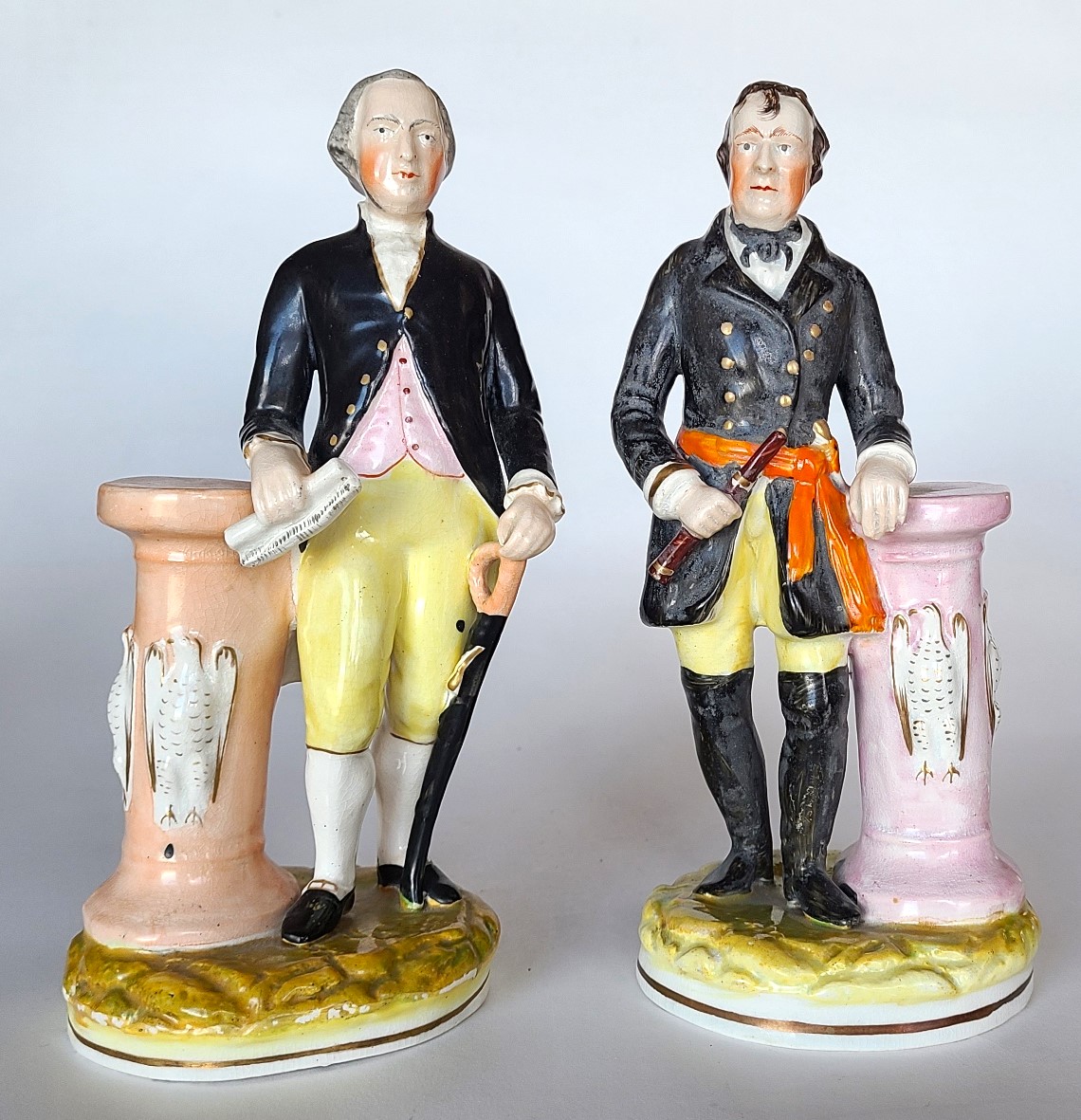
George Washington and Zachary Taylor
This is a very rare pair of figures portraying George Washington and Zachary Taylor. They stand approximately 9” and 9.1″ tall, and date to approximately 1850.
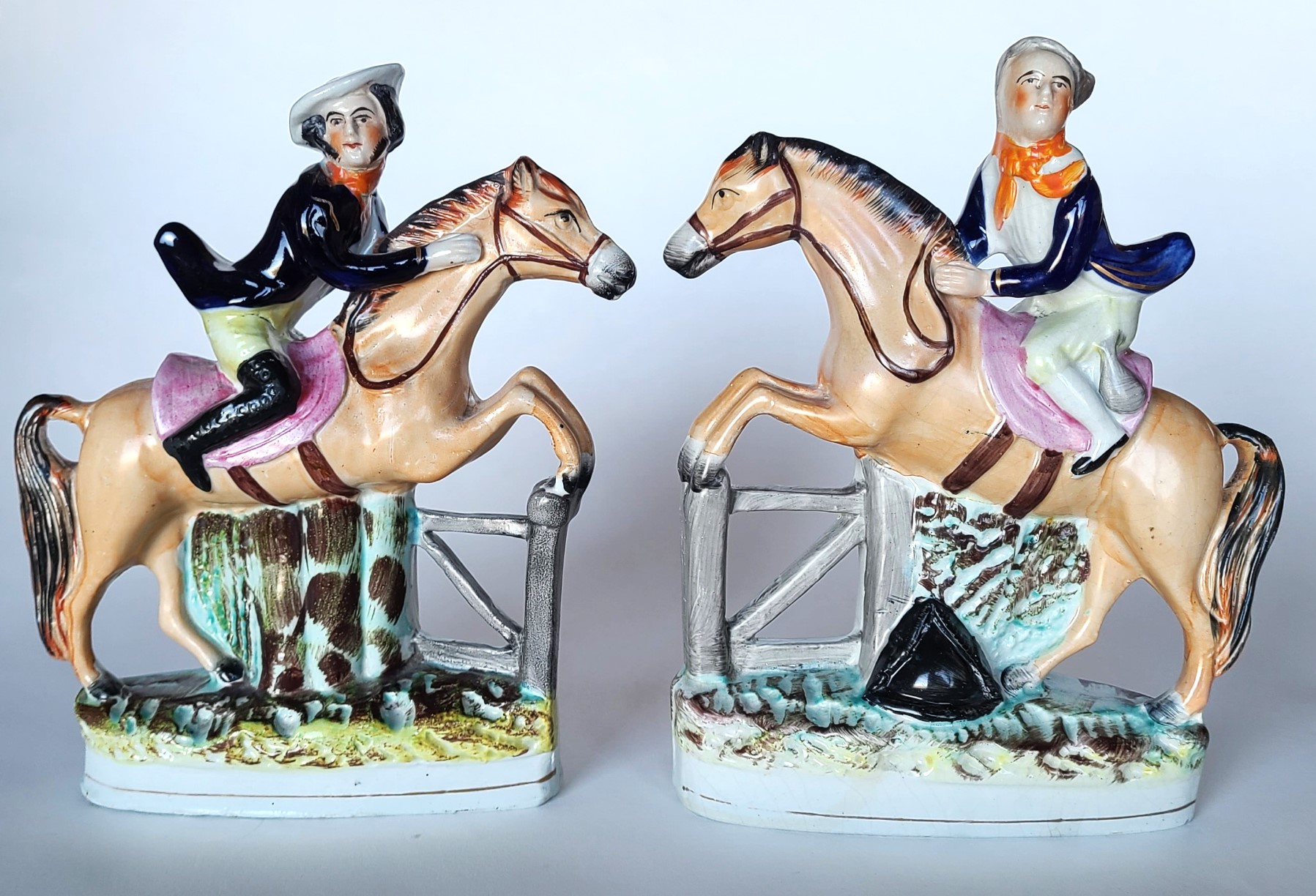
Tam O’Shanter and John Gilpin
This is a very rare pair of figures portraying Tam O’Shanter and John Gilpin. They stand approximately 8.6″ and 9.0″ tall, and date to approximately 1845.
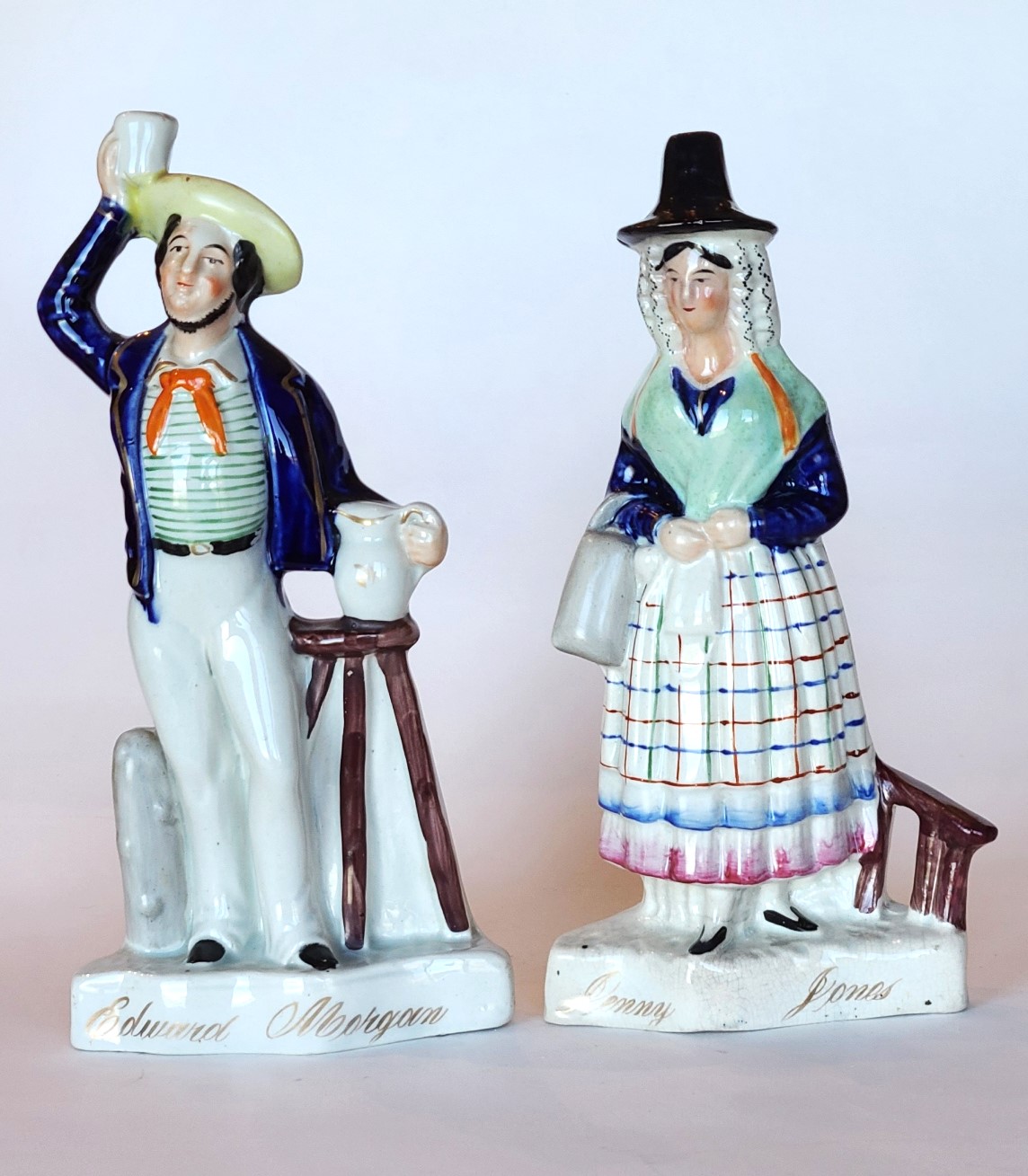
Edward Morgan and Jenny Jones
This is a rare pair of figures portraying Edward Morgan and Jenny Jones, titled with gilt script. The romantic tale of Morgan and Jones was set to music in 1825 by Charles James Mathews.
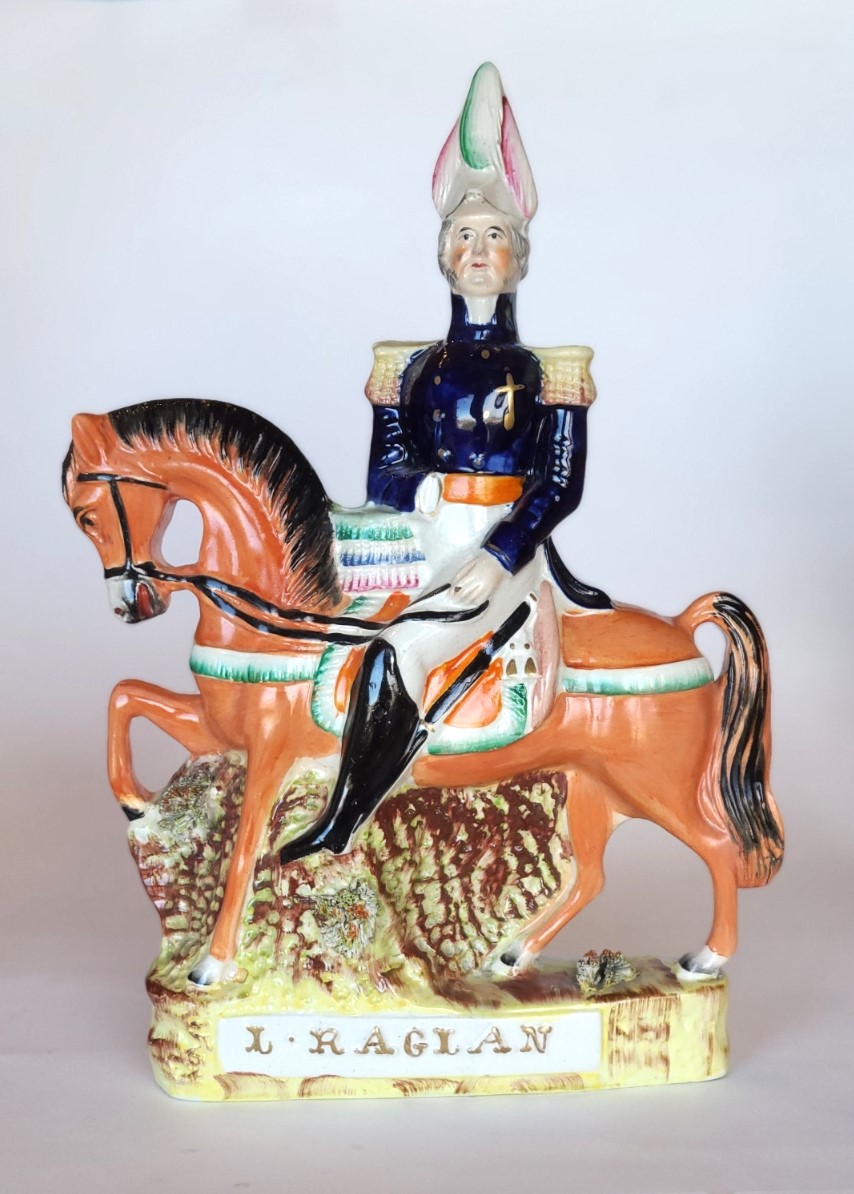
Field Marshal Fitzroy Raglan
This is a rare figure of Field Marshal Fitzroy Raglan. The figure stands about 12 1/4” tall and dates to about 1854.
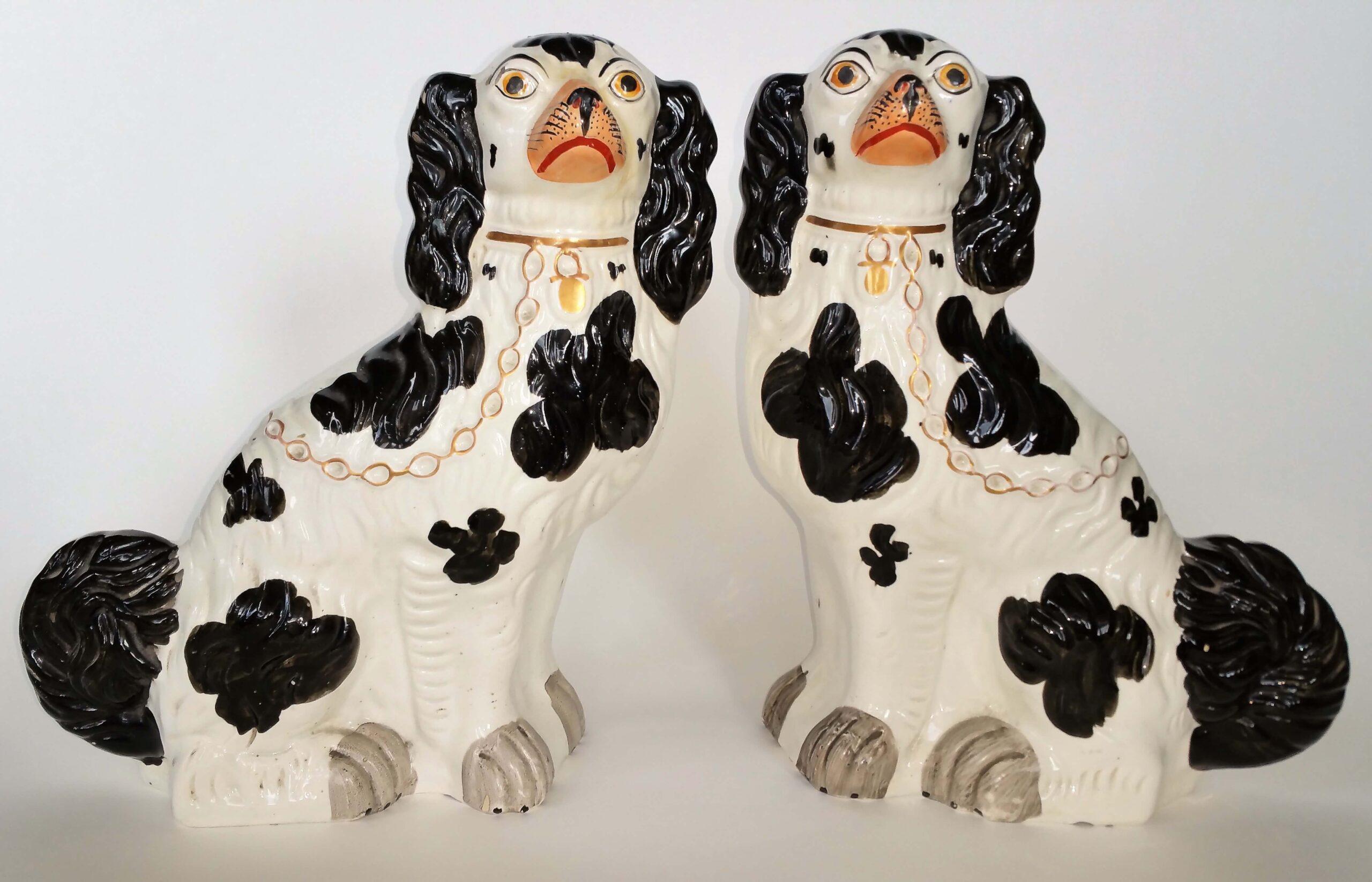
Black and white spaniels
This is fine pair of #1 black and white Staffordshire spaniels. They have a raised number one on the underside, designating them as the largest in a series of six sizes, number six being the smallest.
Membership
We warmly welcome new members – join us for free!
Wherever you are in the world, whether you are an experienced collector, a researcher interested in the folk art of England, or just someone who is intrigued by Staffordshire figures, please join us and get the rest of this year for free! Stay with us next year and pay an annual fee of £45 / $50 per household in January.
